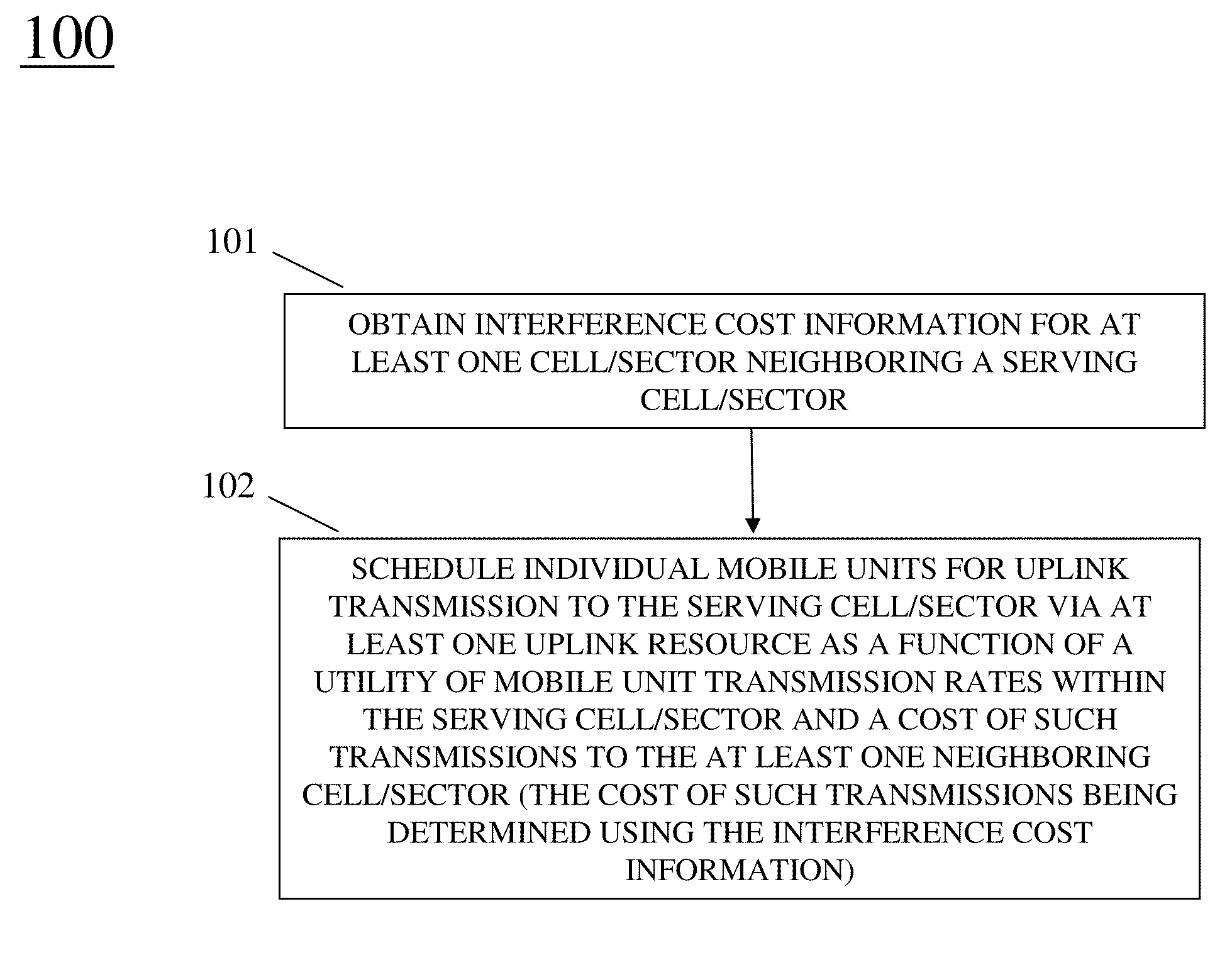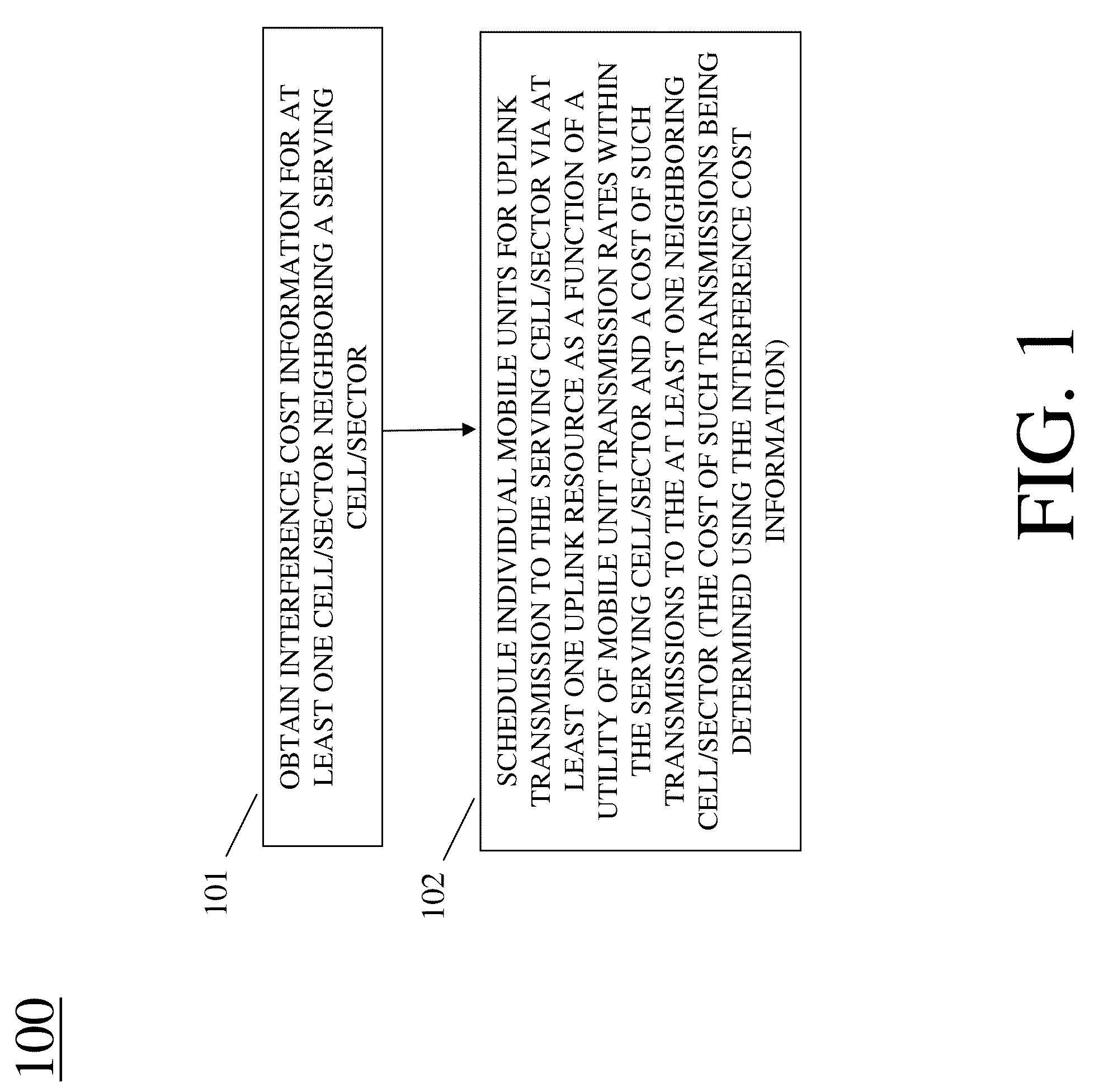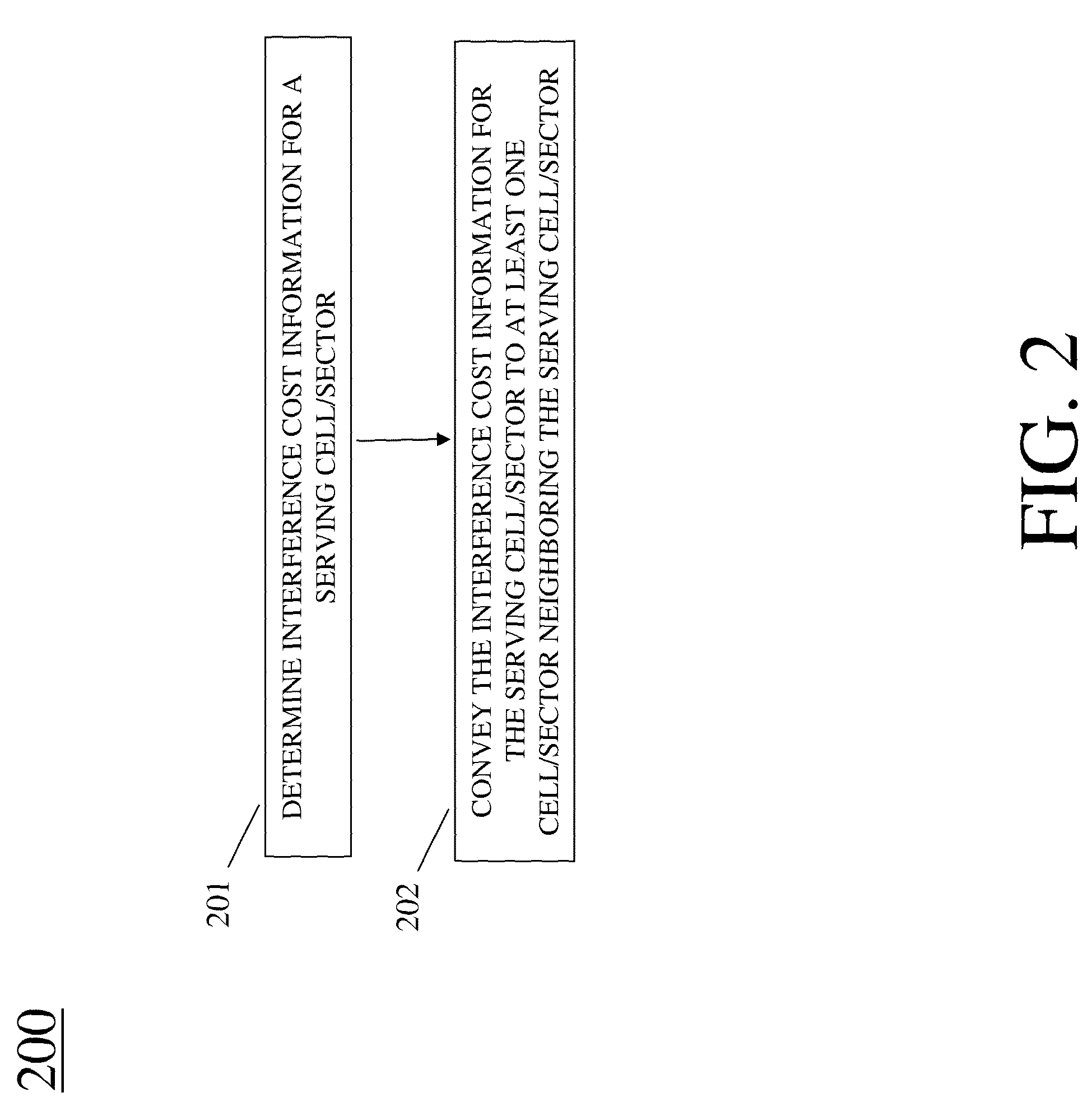Apparatus And Method To Facilitate Wireless Uplink Resource Allocation
a wireless uplink and resource allocation technology, applied in the field of communication, can solve the problems of static ffr becoming grossly inefficient, static ffr typically requiring a priori network frequency planning, etc., and achieve the effect of improving system capacity and/or coverag
- Summary
- Abstract
- Description
- Claims
- Application Information
AI Technical Summary
Benefits of technology
Problems solved by technology
Method used
Image
Examples
example embodiment
[0060]FIG. 4 is a block diagram depiction of a communication system in accordance with some specific embodiments of the present invention. Note that the frequency band is divided into j subbands and base stations (BSs) 1-3 are depicted in diagram 400. Regarding interference costs, each BS k continuously estimates the sensitivities a of its utility U to the interference I it receives in subband j:
aj(k)=∂U(k) / ∂Ij(k)
Done along with transmit scheduling below, updates of these costs are signaled to its respective neighbors.
[0061]Transmit power optimization involves using average propogation gains G, from users i to neighbor BSs 1, each BS k determines per-user i, per-subband j optimal transmit power (if scheduled) according to:
Pij=arg max[Hij≡U′i(Xi)Rij(Pij)−Σl≠kaj(l)Gi(l)Pij]
Note that transmit powers P change slowly.
[0062]Transmit scheduling is done independently by each BS k according to instantaneous scheduling weights
Ĥij≡U′i(Xi){circumflex over (R)}ij(Pij)−Σl≠kaj(l)Gi(l)Pij
along wi...
PUM
 Login to View More
Login to View More Abstract
Description
Claims
Application Information
 Login to View More
Login to View More - R&D
- Intellectual Property
- Life Sciences
- Materials
- Tech Scout
- Unparalleled Data Quality
- Higher Quality Content
- 60% Fewer Hallucinations
Browse by: Latest US Patents, China's latest patents, Technical Efficacy Thesaurus, Application Domain, Technology Topic, Popular Technical Reports.
© 2025 PatSnap. All rights reserved.Legal|Privacy policy|Modern Slavery Act Transparency Statement|Sitemap|About US| Contact US: help@patsnap.com



